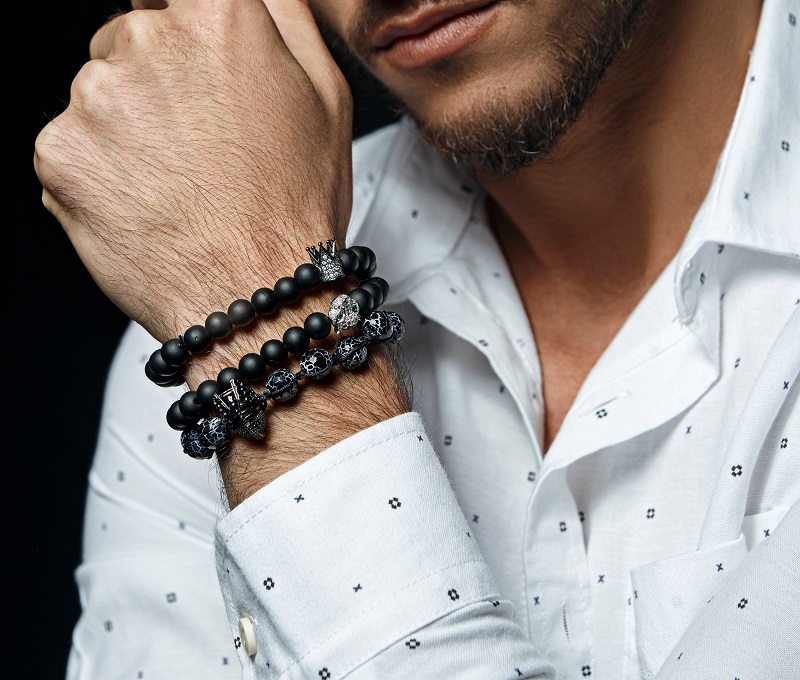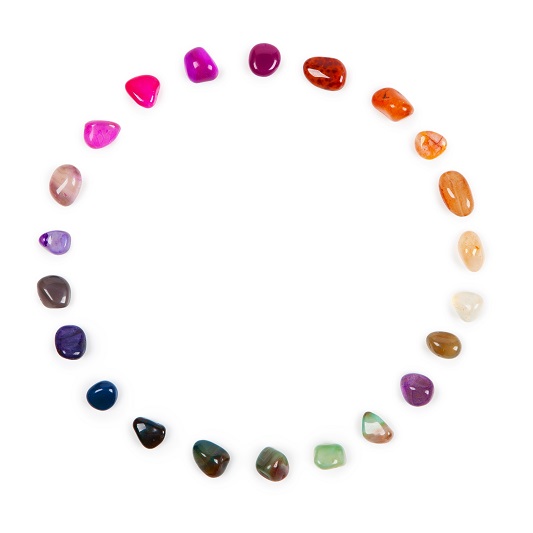Malachite, Gemstone of the Week

Labradorite Gemstone of the Week
23rd February 2018
Moldavite, gemstone of the week
8th March 2018Malachite is a green copper carbonate hydroxide mineral. It was one of the first ever ores used to produce copper metal and although it is of minor importance today as a copper ore, it still can be sold for high prices as it has plenty of other uses.
Malachite popularity stems from its usefulness as a sculpting material or paint pigment. It’s been mostly used like this for thousands of years and is often cut into cabochons or small beads that are then place within different types of jewellery. Its popularity as a fashion item stems from its ability to not fade over time when exposed to light or wear and tear making it perfect for long lasting jewellery.
How to Identify Malachite
Malachite is one of the most easily identifiable materials and is near impossible to mistake for other gemstones. This is down to its pronounced concentric rings pattern and bright green hue, although if the piece of Malachite is too small to identify by its banding it can sometimes be confused for other gems.
The eye-like rings around Malachite are often referred to as the ‘peacocks eye’ and if it’s being cut for a particularly provocative piece of jewellery a lapidrist will usually cut it to accentuate the stripes. Malachite is also fairly soft, so it will often be coated with a layer of resin or wax to protect the stone and increase its hardness.
Different Colours and Types of Malachite
Malachite is incredibly common and is often found with every secondary copper mineral that’s mined. But when it’s combined with other minerals it creates particularly striking gemstones that are often very pricey. If the green hue is combined with the rich dark blue of azurite the resulting stone is a wash of flowing blues and greens. We explore some of the variations below.
Mottramite
Mostly a green hue, but there are rare variations that come in a sparkling black that can sell for typically very high prices.
Chrysocolla
An attractive gemstone that comes in shades of blue-green. Not often used in jewellery because of its soft and fragile nature, however when it’s agitated with quartz a skilled craftsman can create a valuable piece of jewellery that accentuates the sparkles and swirls of the mineral.
Limonite
This mix of iron oxide and Malachite produces a rusty red colour. Known as a pseudomorph, it’s often used as a replacement for some minerals.
Azurite
Very popular because of its deep blue colour when it’s combined with Malachite it creates a swirling green and blue rainbow that makes any jewellery instantly stand out and sell for quite a high price.
Where is Malachite Found?
Malachite is a mineral that often forms at shallow depths within the earths crust around the world. Normally found in what’s known as the ‘oxidizing zone’ it’s usually found above Copper deposits as it precipitates down from solutions in fractures of walls, cavities or caves and spaces in various porous rock.
It’s will often form within Limestone because of its porous nature and subsurface chemical composition makes it favourite for Malachite to form.
The first Malachite deposits to be found where found 4000 years ago in ancient Egypt and Israel, it’s popularity as a malleable gemstone is why many pieces of ancient jewellery are found with this stone still intact within it. The biggest known deposit of the mineral was found in the Russian Ural Mountains where tons of it was dug out of the ground over a short period of time. Because it was so popular it was aggressively mined in the 1800’s and now very little of the deposit remains.
Modern Malachite is normally from deposits in the Republic of Congo or smaller mines in France, Arizona and Australia. Due to the low demand the market for Malachite is relatively inexpensive so you can normally find pieces of it for personal use at a very low cost either online or in a local gem ore alternative healing store.
Healing Properties of Malachite
Malachite is known as a stone of balance, manifestation and intention. It absorbs your energy and helps to draw your emotions to the surface as well as clear and activate your heart and throat Chakras.
It’s an extremely powerful metaphysical stone that is often referred to as the “Stone of Transformation” as it’s used primarily for deep cleaning of energy and brining about positive and healing effects to the wearer. Because of how strong it can be most metaphysicians will recommend using Malachite in very small doses during treatments.
Malachite is also highly protective of its wear and will absorb pollution in the area and will shield against radioactivity. It’s also useful for the treatment of menstrual cramps and during childbirth for those that prefer to avoid the medicated option.
If placed on the third eye it also helps with psychic vision, whilst holding it over the heart chakra will aid in bringing balance and fidelity to your relationships in both personal and romantic.
For physical uses Malachite is also wonderful at equalizing and balancing the body during healing. It’s great for the treatment of chronic and long-lasting health problems like asthma, swollen joints, broken bones, torn muscle tissue and arthritis.
In Summary
Malachite is popular all over the globe because of its beauty and countless beneficial healing uses. It’s relatively common to find which in turn leads to low prices on some of the more simple variations of the gemstone and when it is combined it can lead to some particularly beautiful pieces of jewellery.
Although it’s not used as much in our modern lives it’s still beneficial to have a piece of Malachite in your home. So, whether you’re looking to have a nice piece of jewellery around the home that you can show off to your friends or you want to reap the countless benefits of Malachite powerful healing abilities, it’s definitely a stone you want to have around you.




